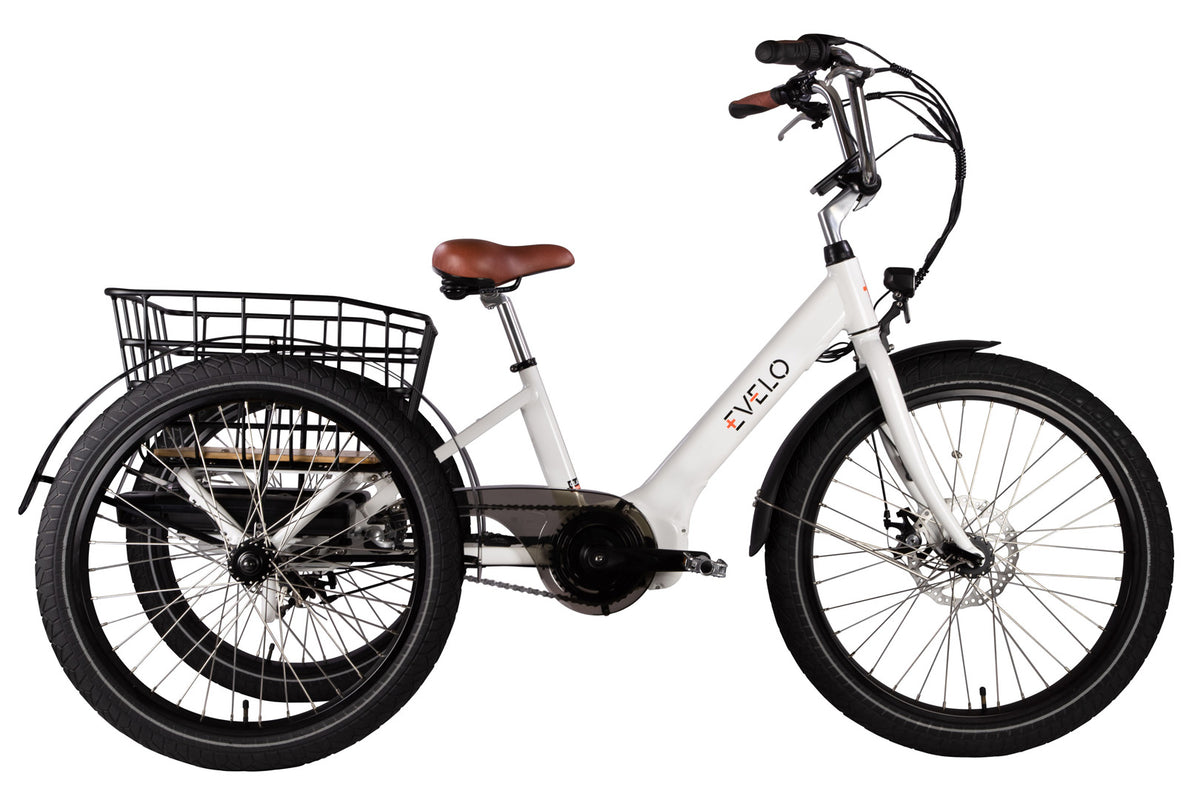The bicycle has a history that goes back about 600 years and is quite different than the bike as we know today.
Many major innovations have dramatically transformed the bicycle’s form and features over the years. Earlier models had two wheels, but no way to steer, and even required a running start. One at a time, features were slowly developed such as mechanisms to steer, a way to propel the bicycle forward without touching the ground, and system to slow and stop the bike.
In the timeline below, we highlight both major milestones for the bicycle as well as smaller innovations that show the evolution leading up to the modern bicycle:

Share this Image On Your Site
1418 - The First Human-Powered Land Vehicle - Giovanni Fontana builds the first human powered land vehicle which has four wheels and uses a rope connected by gears to the wheels.
1790 - Celerifere - Invented by Comte Mede de Sivrac, it has two equal-sized wheels and a seat, but no steering, brakes, or pedals. The rider powers forward using their feet for a walking or running start then glides on the celerifere.
A rider powers forward using their feet for a walking/running push-off and then glides on the celerifere.
1817 - Steerable Laufmaschine - This machine goes by many names, including the running machine, velocipede, Draisine, and the swift-walker. The wooden steerable laufmaschine has a steerable front wheel and is the first appearance of the two-wheeler principle.
1858 - Pedals - The steerable laufmaschine has pedals added to it. It’s unclear who was the first to add these. The credit either goes to Frenchman Pierre Michaux, his son Ernest Michaux, or Pierre Llament.
1863 - Boneshaker - Blacksmith Ernest Michaux invents the first commercially successful velocipede in 1863, which is now called the boneshaker. The boneshaker was made of stiff materials and straight angles which literally made it a “boneshaker” to ride on over common cobblestone roads.
1866 - Penny Farthing - British engineer, James Starley invents the penny farthing which is commonly known as the high wheeler. The penny farthing looks pretty silly compared to modern bicycles, and it was actually pretty difficult to ride. This difficulty limited the popularity of the high wheeler.
Makers realized the bigger you make the front wheel, the farther you could travel with one pedal rotation, so wheels continued to become larger. These bikes cost an average worker six months worth of pay.
1868 - Rubberized Wheels - Clément Ader is granted the first patent for rubberized wheels. There was still room to improve on ride softness, so rubber tires with an empty core were also tried.
1876 - Caliper Brakes - English inventors Browett and Harrison patent an early version of the caliper brake.
1879 - Bicyclette - Henry J. Lawson patents the first rear wheel, chain-driven safety bicycle. Lawson’s earlier models were all lever-driven.
1885 - Rover Safety Bicycle - John Kemp Starley invents the rover safety bicycle in England. This is the first model to look like what we now think of as a standard bicycle. This model combines a low seat, strong metal for a chain, and two wheels that are similar in size.
1888 - Inflatable Tires - John Boyd Dunlop patents pneumatic tires in Ireland. These came about when John’s young son asked him to find a way to make his tricycle have a softer ride on their common cobblestone streets. Although Dunlop thought he had invented inflatable tires, they had (unbeknownst to him) already been invented by Robert Thomson in 1845.
1889 - The Pedal-Back Brake - These brakes were patented by Daniel-Stover and William Hance, and would later become known as safety brakes. They also would later become a standard feature on bicycles.
1896 - Coaster Brakes - These brakes allow the bike to move forward without requiring the pedals to move. Additionally, the rider can brake by pedaling backwards. These brakes continue to be popular in some areas to this day.
1897 - Duck Brakes - This type of brake uses a rod operated by a lever on the handlebar. The rider pulls the lever to pull rubber rollers against the front tire to slow down the vehicle.
1897 - Mid-Drive Electric Bicycle Design - Hosea W. Libbey files a patent for this design in which the mid-drive spins only at the RPMs of the wheel. This is a precursor to the modern e-bike with a mid-drive motor.
1898 - Pedal-Powered Battery Regenerator - Gordon J. Scott files a patent for an electric velocipede. This is a peculiar design in which the pedals spin a generator, which in turn drives a small motor.
1898 - Freewheel - Ernst Sachs invents the freewheel. 1898 is the first year the freewheel is commercialized. This invention allows the rider to keep pedals stationary while the bicycle still moves forward, but uses a different mechanism to do this than the coaster brake.
1938 - Electric Hub Motor - Thomas M. McDonald files a patent for an electric hub motor. This may be the earliest of its kind for a front-wheel mounted version. The patent filing details this bicycle aims to allow the bicycle to be operated by only power, with the option of pedals.
1979 - Mountain Bike - Californian Joe Breeze is credited for creating the mountain bike. The prototypes for these are developed by many early designers including Joe Breeze, Otis Guy, Gary Fisher, and Craig Mitchell. These are the first tough frames built for downhill racing.
1984 - Cogs - It becomes popular for cogs to be added to the rear gear cluster, increasing the number of speeds from 15 to 18, 21 and 24.
2002 - 10-Cog Rear Cluster - Italian bicycle component manufacturer Campagnolo develops a 10-cog rear cluster, allowing for 30-speed bicycles.
2009 - Electronic Gears - International manufacturer Shimano develops electronic gears that allow for faster shifting.
2012 - ADAPTRAC - Adaptrac invents a system allowing the rider to individually adjust tire pressure while riding. Through a system of carbon dioxide cartridges, this allows riders to maintain optimum traction when riding conditions change.
2014 - Lithium Nickel Manganese Cobalt Oxide Batteries - Otherwise known as NMC batteries, this is a newer type of lithium battery that starts becoming popular with electric bicycles around 2013-2014. NMC delivers higher power in a smaller package than previous models.









 Easy Assembly
Easy Assembly
 Service and Repairs
Service and Repairs
 Ebike Articles & Content
Ebike Articles & Content
